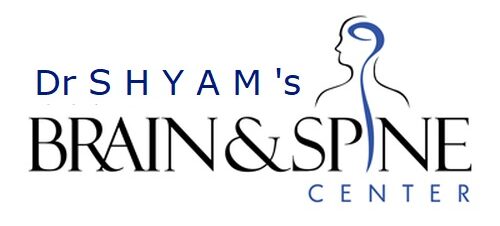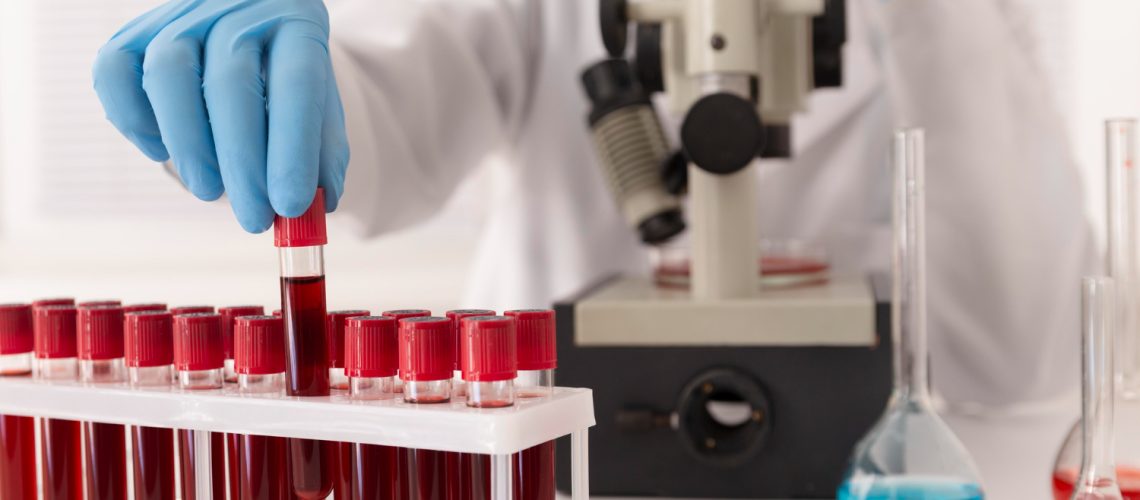Blood clots are gel-like clumps of blood. They are beneficial to plug injured blood vessels, which stops bleeding. When clots form and don’t dissolve naturally, they may require medical attention, especially if they are in your legs or are in more critical locations, such as your lungs and brain.
A stroke occurs when the blood supply to part of your brain is interrupted or reduced, preventing brain tissue from getting oxygen and nutrients. Brain cells begin to die in minutes. This happens when a clot in a blood vessel supplying the brain develops.
The location of the blood clot will determine the severity of the symptoms.
What are the symptoms of a blood clot in the brain?
Here is a checklist of symptoms that can help you identify if a person has experienced brain stroke in the past, or is at a higher risk of suffering from one in the near future:
Blurry and darkened vision: Blurred vision is one of the earliest signs of a brain stroke. In this scenario, the person is prone to suffer from double vision.
Slurred speech: Difficulty in speaking is another common symptom of an imminent brain stroke or attack. The patient may be unable to communicate or have slurred speech that is difficult to comprehend.
Numbness: Prolonged numbness on either side of the face can be a sign of an impending brain stroke. If you are experiencing this symptom, you must consult your Apollo doctor immediately.
Acute paralysis: Blood clots in the brain can cause partial paralysis on either side of the patient’s body. Paralysis usually affects the limbs, and in some cases, can also impact one side of the face.
Trouble walking: Brain stroke can cause an individual to lose balance or coordination of their arms and legs. It can also cause sudden bouts of dizziness. This makes walking a difficult task for the afflicted patient.
Visual agnosia: In certain instances of brain stroke, when there’s damage along the pathways that connect the occipital lobe of the brain to the temporal lobe, the person may end up suffering from visual agnosia. Visual agnosia is the inability to recognize a large number of objects placed in front of you. You may suddenly have blurred or blackened vision in one or both eyes, or you may see double.
Headache. A sudden, severe headache, which may be accompanied by vomiting, dizziness or altered consciousness, may indicate that you’re having a stroke.
When should you see a doctor?
When you experience any of the above-mentioned symptoms, you should visit your Apollo doctor immediately.
What are the causes of blood clots in the brain?
Embolism: Cerebral embolism or an embolic stroke occurs when blood clots from other parts of the body block a blood vessel leading to the brain. These travelling clots may also cause damage to other parts of the body before reaching the brain.
Hardening of the arteries: Atherosclerosis, or hardening of the arteries, can increase the chances of a blood clot in the brain. Hardened arteries are at a higher risk of rupturing when blood is pumped through them, making them more susceptible to developing clots.
Infection: A bacterial infection can lead to inflammation, which can reduce the blood flow through the vein. This raises the risk of developing blood clots.
Head injuries: A severe head injury can lead to rupturing of blood vessels in the brain, which in turn may lead to blood collecting near the surrounding protective tissues and forming a clot called Hematoma.
What are the risk factors associated with a brain stroke?
Some people are at a higher risk of developing a blood clot in the brain due to certain risk factors.
Blood clots become more common as people get older, especially those above the age of 65.
You might be at high risk if:
People are at a risk of developing blood clots in the brain if:
- They have a family history of blood clots
- They are obese
- They smoke or consume recreational drugs
- They suffer from hypertension
- They suffer from autoimmune diseases
- They suffer from heart diseases like heart failure, heart defects, heart infection or abnormal heart rhythm, such as atrial fibrillation
- They have recently given birth
What are the treatment options for brain strokes?
A brain stroke is a life-threatening disease that usually necessitates hospitalization. In the instance of a stroke, immediate medical assistance should be sought. The chances of recovery are higher when medical treatment is administered quickly.
The form of treatment is determined by the location of the blood clot and its severity. One or more of the following therapies are frequently recommended by doctors.
- Emergency IV medication: Therapy with drugs that can break up a clot has to be given within 4.5 hours from when symptoms first started if given intravenously. An IV injection of recombinant tissue plasminogen activator (tPA) — also called alteplase — is the gold standard treatment for ischemic stroke.
- Anticoagulants, often known as blood thinners, help to prevent blood clots from forming. Doctors may also prescribe Thrombolytics, which are drugs that dissolve clots that have already formed.
- Surgery: Catheter-directed thrombolysis involves sending a catheter (a long tube) to the blood clot. By providing medication directly to the clot, the catheter aids in its dissolution. During thrombectomy surgery, doctors use specialized equipment to delicately remove a blood clot.
- Usage of Stents: Doctors may determine whether or not a stent is required to keep an artery open and prevent blockages.
- Vena cava filters: For patients suffering from Deep Vein Thrombosis (DVT) and unable to take blood thinners, a filter is inserted into their inferior vena cava (the body’s largest vein) to trap blood clots before they reach their heart, lungs and brain.
What are the measures that can be taken to prevent a brain stroke?
Here are a few easy tips to prevent brain stroke:
- Maintaining a healthy lifestyle – Eating healthy, regular exercising and maintain a healthy sleep schedule
- Avoiding smoking and recreational drugs
- Avoiding stress triggers
- Staying hydrated
- Regular health checkups
A Note from Apollo Hospitals
A brain stroke or the formation of a blood clot in the brain is a serious health problem that should be addressed immediately to avoid any further health risks. If you are experiencing any of the symptoms listed in this article, you should seek medical attention immediately.
- Face. Ask the person to smile. Does one side of the face droop?
- Arms. Ask the person to raise both arms. Does one arm drift downward? Or is one arm unable to rise?
- Speech. Ask the person to repeat a simple phrase. Is his or her speech slurred or strange?
- Time. If you observe any of these signs, call 911 or emergency medical help immediately
The acronym for easy recall is FAST .
To avoid partial or complete paralysis, swift medical attention must be given to the patient.
Frequently Asked Questions (FAQs)
Is hemorrhagic stroke a type of brain stroke?
Yes, it is a type of brain stroke where the blood vessel gets ruptured and bleeds into the brain. Intracerebral hemorrhage and Subarachnoid hemorrhage are the two kinds of hemorrhagic stroke. Intracerebral hemorrhage occurs when the bleeding takes place within the brain tissue. Subarachnoid hemorrhage occurs usually due to head injury, when the bleeding takes place between the skull and the brain.
Is it possible to fully recover from a brain stroke?
The likelihood of a patient recovering fully from a brain stroke depends on the patient receiving timely medical attention, following the regimen suggested by the doctor and being prescribed proper medication. And the extent of the brain tissue affected.
Do I have to join a rehabilitation program for better recovery from a brain stroke?
Yes, therapists usually recommend patients, who are recovering from brain strokes, to join rehabilitation programs to help bring patients back to normalcy.

